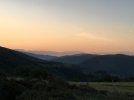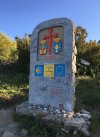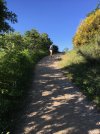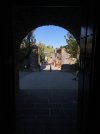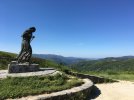- Time of past OR future Camino
- May 2023: Via Francigena, Lucca to Rome
In another thread on "when did you feel most like quitting" a number of people have mentioned the long climb to O Cebreiro as one of their more discouraging days. Which is a shame, because it is a lovely walk ... if you do it at the start and not the end of your day.
My advice, for those walking the CF the first time: take a look at the elevation map on Gronze. There are some lovely towns along the river before the climb. Take a short day and spend the night in one. When I walked it seemed like 95% of the pilgrims tackled the climb at the end of a long day. The few of us who spent the night in Vega de Valcarce had first breakfast at the start of the climb, coffee and a snack part way up at La Faba, and arrived in O Cebreiro in time for a leisurely lunch.
In general, it's easier to climb a hill in the morning when you're still fresh. You'll need to ignore what everyone else seems to be doing, but you'll meet others who are also ignoring the main stages. I try not to give too much strong advice to new pilgrims beyond the basics (pack light, carry enough water, etc) ... but this is an exception!
My advice, for those walking the CF the first time: take a look at the elevation map on Gronze. There are some lovely towns along the river before the climb. Take a short day and spend the night in one. When I walked it seemed like 95% of the pilgrims tackled the climb at the end of a long day. The few of us who spent the night in Vega de Valcarce had first breakfast at the start of the climb, coffee and a snack part way up at La Faba, and arrived in O Cebreiro in time for a leisurely lunch.
In general, it's easier to climb a hill in the morning when you're still fresh. You'll need to ignore what everyone else seems to be doing, but you'll meet others who are also ignoring the main stages. I try not to give too much strong advice to new pilgrims beyond the basics (pack light, carry enough water, etc) ... but this is an exception!
Last edited:






